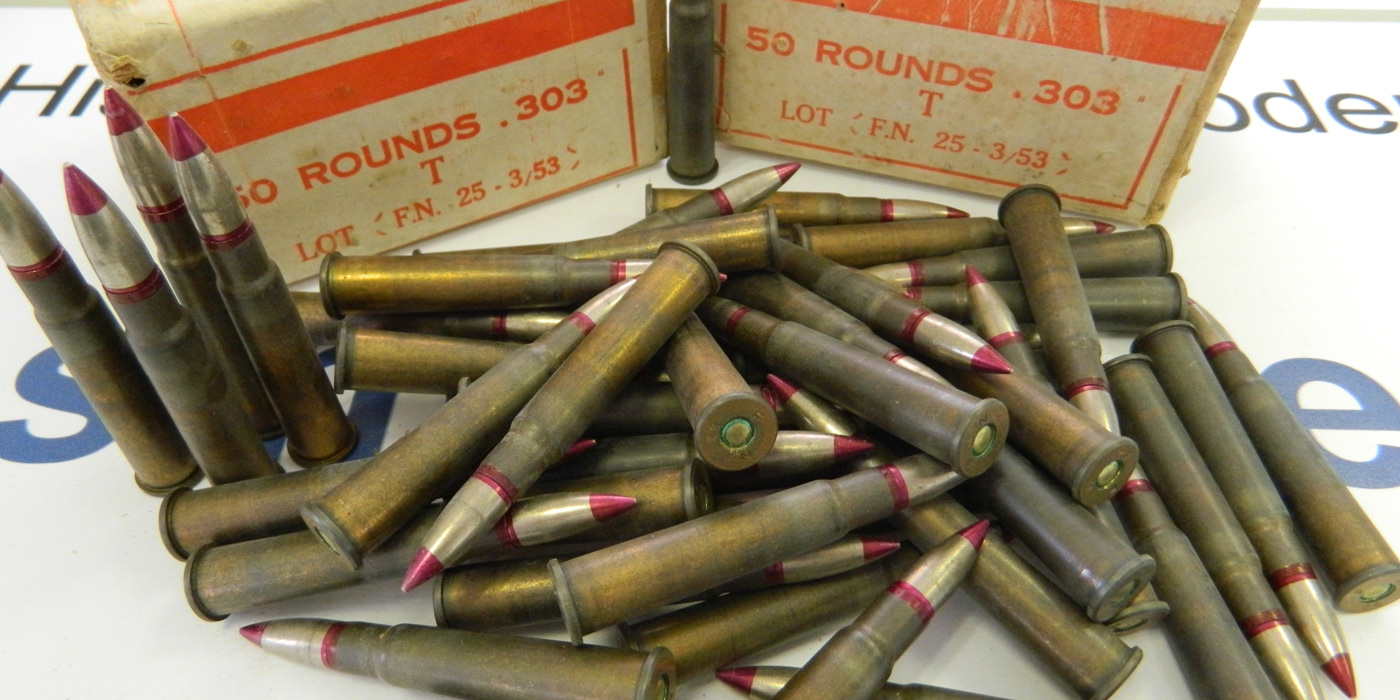
Is there any calibre quite so quintessentially Canadian as .303 British? Although having been developed for and used in the defence of Queen and country from 1892 until today, the venerable .303 and the surplus Lee-Enfield rifles it's most commonly used in have become mainstays in the Canadian tradition of firearms ownership. This makes it easy to forget that what many consider to be a much-beloved hunting round was in fact the catalyst for the creation of one of the defining assault weapons of the century: the Lee-Enfield rifle.
Initially adopted by the military in 1888, the first .303 service rounds were developed in conjunction with the Lee-Metford rifle; a rifle that paired the quick rear-locking bolt action developed by James Paris Lee with an innovative seven-groove rifled barrel developed by William Ellis Metford to resist the fouling that was so common with black powder firearms. However, with the French having debuted the world's first smokeless military service round two years prior in 1886 (the 8mm Lebel), the British quickly recognized that their new round was already proving obsolete, and began experimenting with a trio of smokeless powder propellants: riflelite, cordite, and ballistite. However, as the Committee on Explosives closed in on cordite as their preferred propellant, another issue came to the fore: the Metford rifling. Cut quite shallow in order to resist black powder fouling, the rifling was quickly eroded by the greater velocities and pressures of the new smokeless powder, which in turn led to the adoption of a new barrel assembly sourced from the Royal Small Arms Factory - in the London Borough of Enfield. Thus, with the creation of the smokeless .303 British round came the debut of the Lee-Enfield rifle.
Over the next sixty or so years, the .303 British would see itself re-invented through ten different marks which themselves can be subdivided into roughly 26 independent variations. Although some of the variants, such as the hollow-pointed Mk III, IV, and V loadings were dedicated to increasing the round's lethality, others were dedicated to increasing the round's versatility. For example, the Mk VIII round used heavier and longer 175-grain boat-tailed bullets and more powder for increased muzzle velocity, and was intended for use in the Vickers machine gun. But as a result of the heavier loading and high temperature of the cordite propellant, the Mark VIII round earned a reputation for eroding rifle bores at a much higher rate, leading the British army to subsequently develop a cooler-burning nitrocellulose-powered version (stamped Mk VIIIz) and ban all Mark VIII ammunition from use in the Lee-Enfield rifle. Of course, this led to most British soldiers trying to procure as much Mk VIII ammunition as they could, so as to shoot it from their rifles.
But the most popular variant of the .303 British service round was the Mk VII and Mk VIIz (Mk VIIz being nitrocellulose powered, like its Mk VIIIz brethren) version. Using the spitzer (pointed nose) bullet design created in 1898 by the French Atelier de Puteaux for their 8mm Lebel, the Mk VII actually combined the engineering of the spitzer's excellent aerodynamic properties with the in-flight stability of the rearward weight bias of the earlier .303's Mk II, III, and IV hollow-pointed rounds. This was accomplished by constructing the first third of the bullet's interior from either Canadian aluminium, cellulose plastic, wood pulp, or compressed paper, with the aft two thirds being constructed of traditional lead. The resultant long, tapering 174-grain bullet was then covered in a full copper jacket in accordance with the demands of the Hague Convention, and saw service in both World Wars as the go-to ammunition for what were then His Majesty's infantrymen.
Still continuing to see military service with our own Canadian Rangers, 200 rounds of .303 British are issued to each of the over 4,000 Rangers annually for use in their issued Lee-Enfield No. 4 rifles. But it's also a calibre that's long since stretched beyond its military roots, and commercial ammunition manufacturers make .303 British for everything from target shooting to big game hunting. And it's in those sorts of roles that the venerable old .303 has really earned its reputation in this country. Capable of taking nearly any and all game found across our vast country, the round's potent performance and wide availability, not to mention the nearly ubiquitous Lee-Enfield's popularity, ensures that it will remain a Canadian favourite for many years to come.